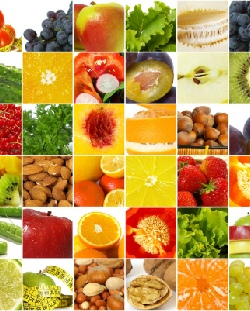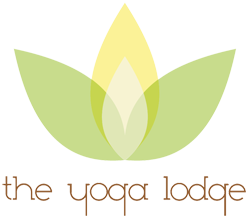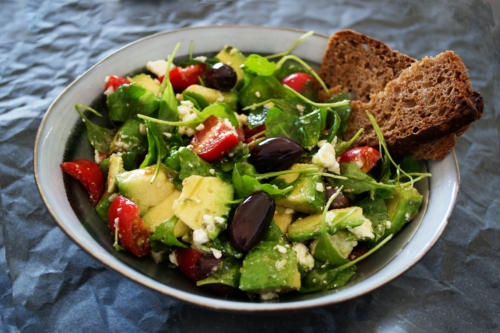Eating The Yogic Way

Welcome to my Blog, Eating The Yogic Way. According to a June 2023 Harvard Medical School News and Research report “The notion that diet and health are inextricably linked is hardly novel. For millennia, people have known that poor nutrition is responsible for many health problems. But the precise mechanisms that explain just how diet alters the function of our cells, tissues, and organs have remained poorly understood.”
Introduction
Swami Vishnu-Devananda was a disciple of Swami Sivananda. He was born in India in 1927, living until 1993. Apart from being the founder of the International Sivananda Yoga Vedanta Centres and Ashrams, he was considered by many as an authority on Hatha and Raja Yoga (The Royal Road of Yoga). He also believed there are five needs for a healthy loving lifestyle, which principally are:
- Good exercise (yoga asana practice)
- Good breathing (yoga pranayama practice)
- Good relaxation (yoga nidra)
- Good thinking (yoga meditation)
- Good food (yoga diet)
Most of us find our way to yoga practice because we want to feel better. Maybe we practice yoga because we suffer from agitation, or maybe because we suffer from aches and pains, or mostly likely both. Some find their way to yoga because a serious illness has frightened them into looking after them self. Yoga really helps because regular practice allows us to become as healthy, balanced and happy as possible.
Most of us know that hatha yoga involves doing some stretching, relaxing and deep breathing, but it isn’t so widely known that hatha yoga also includes eating wisely.
Many of the ancient yogic texts state the importance of eating for purity/well-being as an essential part of yogic practice. A very old text called The Bhagavad Gita states “this yoga is not possible for the one who eats too much, or who eats too little”. In the 15th century The Hatha Yoga Pradipika, warns students to refrain from certain foods claiming they are “injurious to health”, and encourages consuming other types of food for well-being.
Food can be a huge comfort to many and it can be easy to become addicted or obsessed by it particularly when we feel hungry, tired, bored, anxious, worried, sad or happy……so it can be hard to eat sensibly. Yet to eat a balanced diet is very important because it is the very thing our body, brain, heart and lungs are made of. To be well, we owe it to ourselves to eat wisely. Eating wisely is essential if we want to feel and be strong and calm.
Therefore, the statement ….” We are what we eat”… seems to be a very true statement! There seems to be a lot more emphasis today about educating people to eat a healthy and balanced diet, and how it is more widely recognised that eating a mixture of say, five to eight pieces of fruit and vegetables a day is good for us. You would think it may be common sense that you need to eat well to stay well, but I guess that is debatable. However, in Yoga we are taught that the food we put in our mouth affects both our body and our mind. Much like the introduction to this Blog when Harvard Medical School News and Research also believe there is a link between our immunity and gut health.
Why Do We Need Food
It also important we understand why we need food. Food is the fuel and nourishment for one’s internal environment and it reflects in our appearance – it gives us good skin, shiny hair, strong teeth, clear eyes. It reflects in the way we feel and the way we act. For example, it gives us lots of energy, it gives us a sharp, concentrated, positive mind and a balanced mood. When we are like this we feel happy and content. All of these factors promote better relaxation, better sleep and less stress.
Traditionally, Yoga is referred to as a science. The old yoga masters knew it was important to be temperate and aware about our food, and indeed the quotes given above from The Bhagavad Gita and The Hatha Yoga Pradipika reflect this. Some of the advice is not in agreement with modern suggestions for healthy eating but the idea of eating wisely remains an important part of our yoga practise. It is suggested therefore, a Yogin regards his or her body as a vehicle for life, so it is very precious. Eating to give ourself balance and harmony is true Yoga.
The Yoga Sutra, which was written over two thousand years ago, teaches that everything in the Universe has three qualities of nature, including ourselves and our way of thinking, feeling and behaving. All has a mixture, but there is a dominance of one of the three energies and this can greatly affect us.
The three energies of nature (prakriti) are called gunas (qualities):
- Sattva: quality of truth, lightness, purity
- Rajas: passion, energy, desire
- Tamas: ignorance, inertia, darkness.
Yoga teaches and encourages us that a sattvic lifestyle is best recommending we keep sattvic company and think sattvic thoughts. It further suggests how tamasic states should be avoided. This refers to within us as well as all around us.
If you decide that your lifestyle is too tamasic, then masters of old first of all advise us to adopt a more rajasic way of life, and then to gradually embrace a more sattvic inner and outer environment.
Whilst explaining food in the traditional yogic terms of the three gunas, there is some scientific research and advice on which foods are best for health and well-being. Buddha taught that it is important to remember that life is constantly changing and that includes advice on healthy eating. Nothing is permanent and new discoveries in nutrition are also constantly changing particularly as it is such a new science.
Tamas: the quality of gloom, inertia, and darkness, stagnant energy
Foods that come under this heading include:
- Meat
- Eggs (sometimes referred to as Rajasic)
- Processed food, such as white sugar
- Eating foods that are over ripe, or heated up too many times
- Overeating
- Over consumption of alcohol
What Happens To Us If We Eat Too Many Tamasic Foods
Tamasic is the state that yoga practitioners try to avoid the most. That refers to within as well as around us. The yoga masters suggest that if we decide that our lifestyle is too tamasic we need to adopt a more rajasic way first and then gradually develop a more sattvic life.
Tamasic foods withdraw our energy; make us more lethargic and vulnerable to disease. Our mind also becomes more negative. Eating too many tamasic foods is harmful because they create tiredness and a stuck feeling of being unable to move forward.
Eating too many tamasic foods makes our thoughts become negative, and we feel despondent. The body’s resistance to disease weakens and we can become overwhelmed by minor illness and negative emotions such as inadequacy. Through the over-consumption of tamasic foods our body becomes stiff, tired and prey to viruses and infections. Life can feel like an up hill struggle.
Of course we can experience different degrees of tamasic qualities, depending on how much food and other tamasic aspects affect our life style.
Yoga And Vegetarianism
Tamasic foods include meat and perhaps eggs. Not all yoga practitioners, or even all yoga masters are vegetarians. Some yoga masters consume small amounts of meat, eggs and other tamasic foods.
There are several reasons that may explain why the old yogic texts describe meat as tamasic.
- Years ago there were no fridges and food poisoning was a common problem. Perhaps the advice to refrain from eating meat and eggs was to avoid food poisoning.
- Some yogins choose not to eat meat for other reasons, such as the practice of “tapas” or “austerity”. Tapas involves doing something difficult, to strengthen self-discipline. When we have solid self-discipline, we can extend our boundaries and break through our limitations.
- Yogins also believe in “ahimsa”, which means non-violence. Many yoga practitioners make an effort to avoid causing harm to other creatures and so choose not to slaughter animals for food.
- Other yogins are concerned that a slaughtered animal would have died in fear so its body would be full of fear hormones. They do not want to eat meat full of stress chemicals
- Protecting the environment and avoiding global warming is another good reason for choosing vegetarianism. Some yoga practitioners are vegan. A vegan diet requires careful planning to ensure balance.
- Health is important to yogins. Most often the yoga diet is lacto-vegetarian which recent scientific studies are showing to be the healthiest diet. Following it we are less likely to suffer from heart disease, diabetes, some cancers and many other physical problems.
Overeating
Overeating is tamasic. It is inevitable if we eat a lot of tamasic foods that we will also overeat, because tamasic foods cannot fully nourish us. Undernourished, we feel lethargic and tired, so we try to perk ourselves up by eating. We sense that food gives us energy and will lift us, but because we desperately need a lift of energy we are attracted to the quick fix tamasic foods. We desire the fast glucose release that comes from consuming alcohol, or over processed foods. Some scientists believe sugar addiction is similar to heroin addiction.
Sometimes, in an effort to get out of unhappy low energy emotions we compulsively stuff down rajasic foods such as coffee, or chocolate. Uncontrolled energy has a habit of swinging like a pendulum from high to low, or low to high state, seldom resting in the balanced, calm sattvic state. Addiction to food can occur by swinging from highs to lows, causing us to overeat yet stay under nourished. Practising hatha yoga regularly helps to lessen the desire for too many tamasic foods.
It is important not to be too fanatical about anything. The middle path is the best path.
Yoga masters often say that in a healthy body and mind, a small amount of tamasic food occasionally will do little harm. The experienced yoga practitioner will have enough tapas/self control to not over-indulge too many times. The more we practice yoga, the more sattvic we become. It normally happens naturally.
Rajas: the quality of passion, frustration and desire, explosive energy
Foods that come under this heading include:
- Hot spicy foods, or very strong herbs
- Onions and garlic
- Stimulants such as coffee, tea and chocolate
- Fish was considered rajasic but more recently is regarded as a healthy food for the brain. Fish consumption requires caution during pregnancy.
- Eggs are sometimes referred to as rajasic. Caution during pregnancy
- Salt
- Eating in a hurry is also considered rajasic
What Happens If We Eat Too Many Rajasic Foods
The rajasic state isn’t nearly as harmful as the tamasic one, and it is fine to include some rajasic foods in our diet, but too many, too often will stimulate the body making the mind restless and frustrated. Rajasic foods destroy the harmony between mind and body. Rajasic foods are the ones that cause anxiety. We are more likely to be tense, or agitated, after eating these foods. Too much agitation can prevent us from settling into relationships, jobs, or even being alone with ourselves. When rajasic the body is over-stimulated and tense and the mind also over-stimulated and tense.
Insomnia is a rajasic state, as is constantly talking and worrying. The consumption of too many rajasic foods can have us living on our nerves, as anyone who has drunk too much coffee will know. Therefore, if we want to eat these foods, we need to do it with awareness of their effects. Again the rule of the moderate pathway is called for. A little of what you fancy may do you good, but a lot of rajasic, or tamasic consumption can do you harm.
Eating Too Fast
Eating too fast, or in a hurry is rajasic, and has negative consequences on the digestive system. In yoga we are encouraged to be “in the present moment” and to slow ourselves down in order to meditate on the “here and now”. To gulp our food down would mean that we are not focused on the process of eating and of nurturing ourselves. We need awareness to notice what we are doing to ourselves. Only then can we avoid our harmful habits and strengthen our healthy behaviour patterns. To rush food means we are not watching our body’s needs, awareness is not possible if we are on the run.
Sattva: the quality of truth, calmness, lightness and balanced energy
Foods here, include:
- Wholemeal grains
- Rice – brown
- Pasta – wholemeal/grain
- Fresh fruit
- Vegetables
- Low-fat milk
- Low-fat Cheese, caution though – no soft cheese during pregnancy
- Low fat yoghurt
- Nuts, seeds, sprouted seeds
- Honey
- Pure fruit juices, herb teas and water
- Pulses and legumes such as peas, beans, soya and lentils
- Eating moderately is considered sattvic
- Vegetable and nut oils
What Happens If We Eat Sattvic Foods
Sattvic foods are the purest and are for any yoga practitioner who is interested in eating for health. These foods nourish the body and maintain it in a balanced state. “We are what we eat” is literally a true statement. Our bodies are made up of the food we eat.
The Taittiriya Upanishad tells us “Verily, each person consists of the essence of food”. We are taught in yoga that the food we put in our mouths not only affects our body but also our mind. A sattvic diet calms the mind and helps us to feel the best we can psychologically as well as physically.
Just as tamasic and rajasic foods can have an effect on our behaviour, so can a pure natural sattvic diet. The ancient yoga texts stated that the sattvic diet contains the most life-force/prana and so makes us joyful, compassionate and energised.
The yoga way of eating is quite simple. A sattvic diet is as “natural” as possible, including fresh, light, nutritious foods such as fruits, grains and vegetables. A sattvic diet keeps the body strong and energised and the mind happy and clear.
We need certain foods to make and keep us healthy; proteins to rebuild the body; fats and carbohydrates for energy; vitamins and minerals to stimulate the production of certain hormones and enzymes to prevent disease. In recent years the medical profession and scientists have become increasingly interested in the effect food has on our health. So much so that in 2003 the World Health Organisation printed recommendations of a diet that, according to their research, was the most likely to bring and maintain good health. Perhaps, not surprisingly to yoga practitioners, the World Health Organisation’s recommendations are very similar to a yoga sattvic diet. They suggest that we cut down on the amount of meat we eat, and instead consume more vegetarian protein foods such as pulses; cut down on saturated fats and use low-fat dairy products, and cut down on all sugary foods such as cakes, biscuits and sweets, and instead eat dried fruit such as sultanas, dates and nuts. They advise that we eat less processed foods and less fast food and instead we eat at least five portions of fruit and vegetables every day, drink plenty of fluids, cut down on the consumption of tea, coffee and alcohol. The ancient teaching that we are what we eat and how this affects our well-being is mostly validated by the scientists of our own time.
Eating Moderately
Eating moderately is sattvic. The Siva Samhita states “Let the yogin eat moderately; otherwise clever, she or he cannot gain success”. The Hatha Yoga Pradipika says moderate diet is defined as “Taking pleasant and sweet (unprocessed) food, leaving one quarter of the stomach empty and with thanks to the universe”. To eat slowly, mindfully, with appreciation of our food is the sattvic way.
A sattvic diet gives us energy, clear skin, a firm, strong and fully functioning body. It gives us a light step, we feel in touch with ourselves and comfortable in our body and mind. With little or no conflict, we work in harmony on every level of our being. Our emotions are more stable. External disturbances do not so easily upset us. We feel grounded and centred. We can sleep well, and wake feeling refreshed. We can tackle the challenges of life with stamina and a clear head. We feel agile and have a zest for life. Once we have experienced the effects of a sattvic diet we are not so tempted by the tamasic or rajasic foods. We become so finely tuned that we can detect their inharmonious effect upon us almost immediately. Most people find that with regular practice, they are naturally drawn to a more sattvic lifestyle.

How To Change To A Sattvic Diet
It is important to change slowly, because a sudden change can create too much stress. There are many ways you could adopt a more sattvic diet.
Here are a few suggestions that may be helpful:
– Make one day a week a sattvic day. Eat moderately with appreciation and only sattvic foods.
– Be aware of the tamasic foods you eat and the effect they have on you. If you are overeating, try to eat a little less.
– Become aware of the rajasic foods you eat and the effect they have on you. If you are rushing your meals, try to slow down a little.
– Read up on vegetarian issues, you may discover you then feel more inspired to give up, or cut down on meat eating.
– Avoid eating when angry. Wait until you feel calm again. Chemicals that upset digestion can flood the body when we are angry.
– Avoid overeating and equally avoid under eating. Try to also avoid becoming obsessive about your diet or anything else. Food can be very emotive and can cloud our judgement, so practise non-attachment awareness when you eat.
– Work on avoiding tamasic foods as much as possible, and limiting rajasic foods.
– Make one meal a day sattvic, perhaps breakfast. After a month or so add lunch. Then when you feel ready, make your main meal sattvic as well.
There are many excellent vegetarian cook books on the market today. Yoga books often discuss food and give sattvic diet recipes. Just as we need to adopt a gentle discipline and patient attitude towards our posture practice, so we also need to take the same approach to our diet. Through meditation practice we can contact the wisdom within us and so intuitively discover the right foods for us. Try meditating on your body and mind balance and the types of foods that would bring harmony to you.
However, if you require further help or assistance in this matter, then contact me when as a dedicated and caring Yoga Teacher, I would be more than happy to help you.
Mobile: 07973 410375
Email: Pavana@theyogalodge.org.uk







